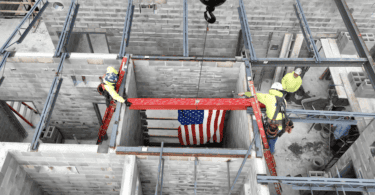by Susie Festel
A meningitis outbreak in 2012 was traced back to contaminated drugs coming from a bulk prescription compounding company, New England Compounding Center in Framingham, Mass. This outbreak sickened hundreds and resulted in 76 deaths. As a result, the commonwealth of Massachusetts began developing new, more stringent guidelines for compounding pharmacies (based off USP 797/800) to ensure a similar tragedy doesn’t happen again.
New regulations take time to develop, and this created uncertainty for private hospital compounding pharmacies looking to build new or renovate existing pharmacies. Some hospitals had to move forward with their projects knowing that changes would need to be made when regulations were finalized. Other hospitals put their designs on hold completely. In the last six months, the Massachusetts Sterile Compounding Guidelines, 247 CMR 17, have been far enough through the process of public hearings, public comments, and revisions with the Board of Registration in Pharmacy (BoRP) that hospitals can be confident they can move forward with design and construction and open new facilities.
One of the more striking shifts of the Massachusetts regulations is in the required minimum sizes of the rooms. Because the gowning and scrubbing-in processes are more stringent than in the USP guidelines, anterooms need to be larger to allow for better flow of the gowning procedure. This procedure now includes that pharmacists must change out of their street clothes and into a new set of scrubs every day in a dressing room that is in close proximity to the anteroom, which is not required in USP 797. Dedicated pharmacy shoes or a second layer of shoe covers is also required.
Compounding rooms also have a minimum square footage, no matter what equipment is, or is not, in the room. Additionally, the Massachusetts BoRP has limited what can be in a compounding room. USP 797 states that “only the furniture, equipment, supplies, and other material required for compounding . . . shall be brought into the area.” This wording allows for storage of compounding materials like tubes, syringes, IV bags, etc. In the MA 247 CMR 17, storage is not permitted, and pharmacists can only bring in what they need for the day. As a result, healthcare organizations now need to plan for separate storage space, in addition to developing procedures regarding how to get materials into the room.
Other regulations have changed as well. Hazardous and nonhazardous materials must be separated upon entering the pharmacy and stored in separate areas. There are maximum sizes for pass-throughs between rooms, and in some cases these pass-throughs need to be HEPA-filtered.
While the final regulations have not been released, the current draft can be used with the Board of Registration in Pharmacy review and approval of the plans. If there are any final changes, the version used to design and construct the space will be grandfathered. These new regulations will also impact compounding pharmacies that do not currently have a plan for renovation or expansion, as they will need to ensure compliance with the new requirements within approximately 18 months of the finalized regulations being released.
Not surprisingly, these intense new regulations are meant to keep anything that might be a contaminant out of the compounding space and to keep hazardous and nonhazardous drugs from contaminating each other. Compounding pharmacy safety is paramount, and these new Massachusetts regulations make that the priority. Organizations that are planning a new or updating their current compounding pharmacy should partner with firms that have read the new regulations and know how to make the guidelines work.
Susie Festel, NCIDQ is lead designer, associate/interior architect for JACA Architects.











